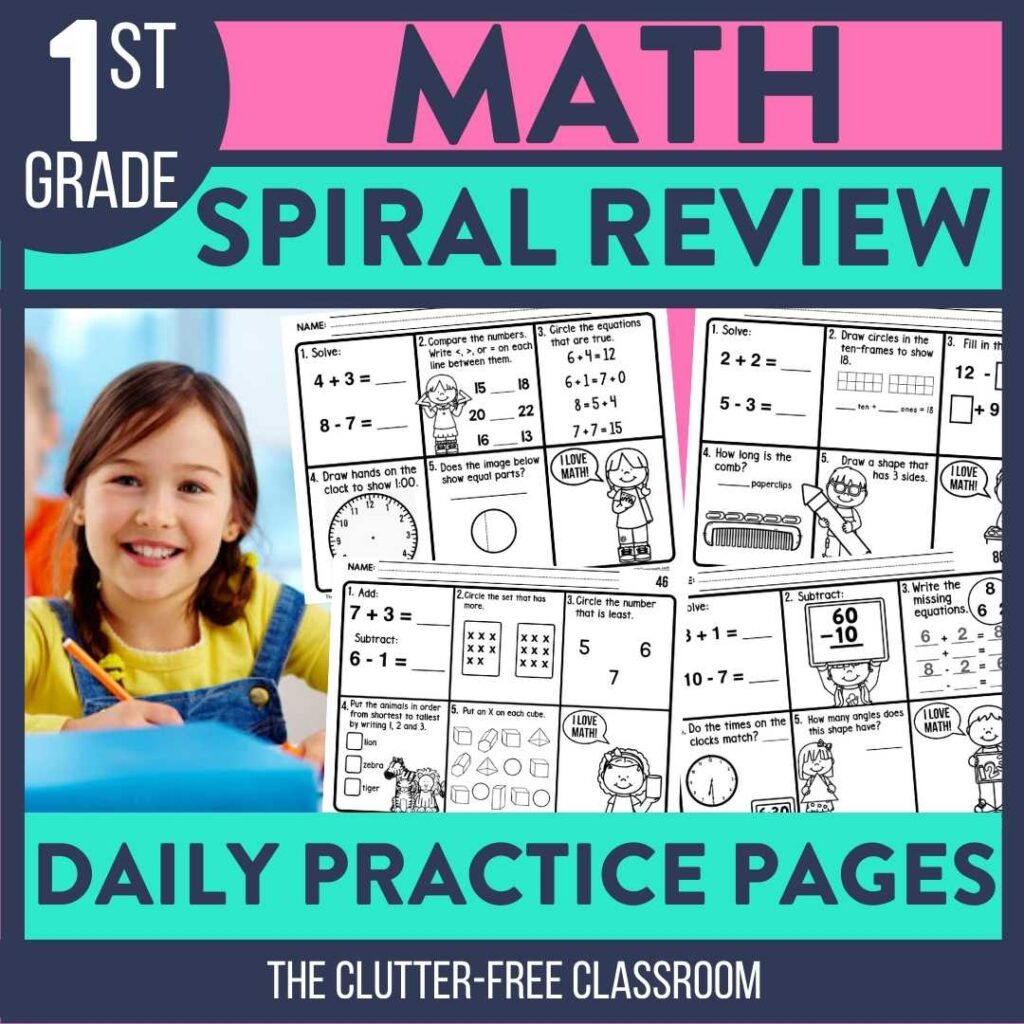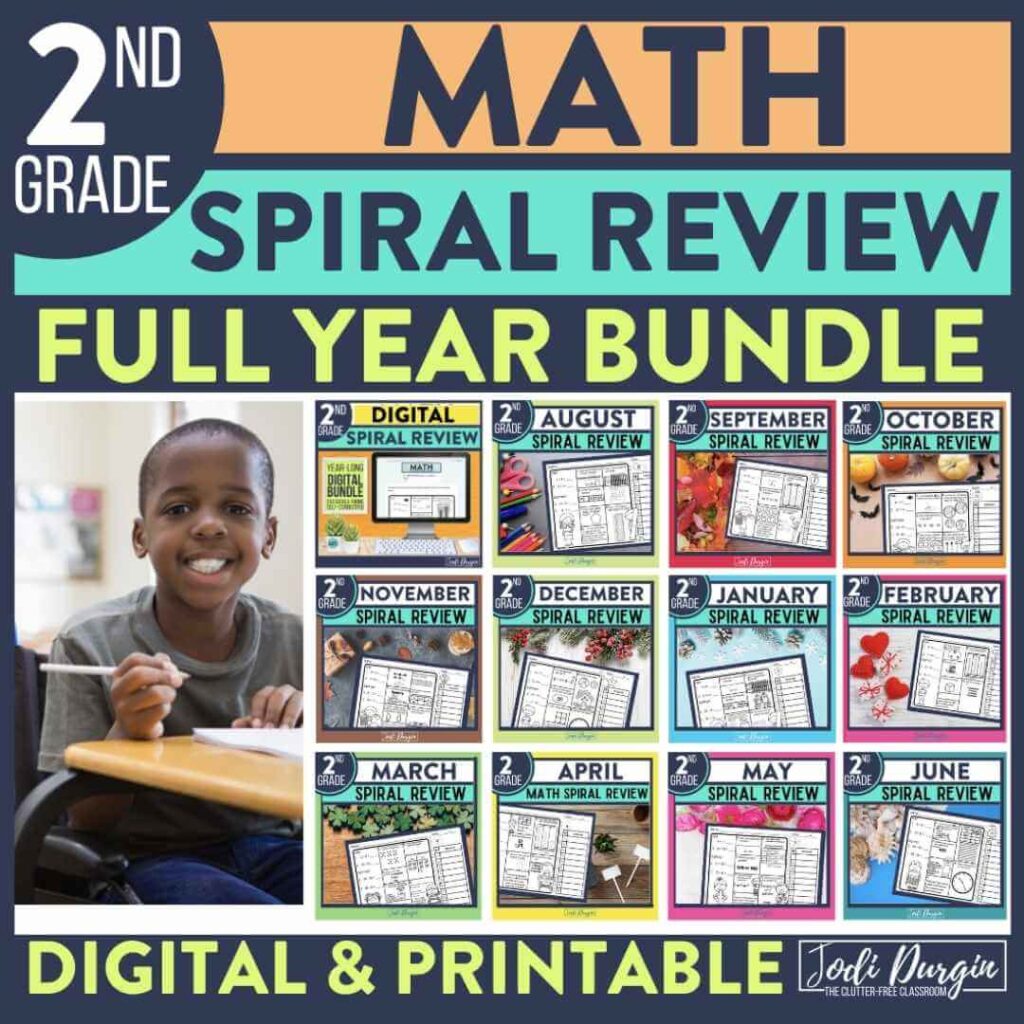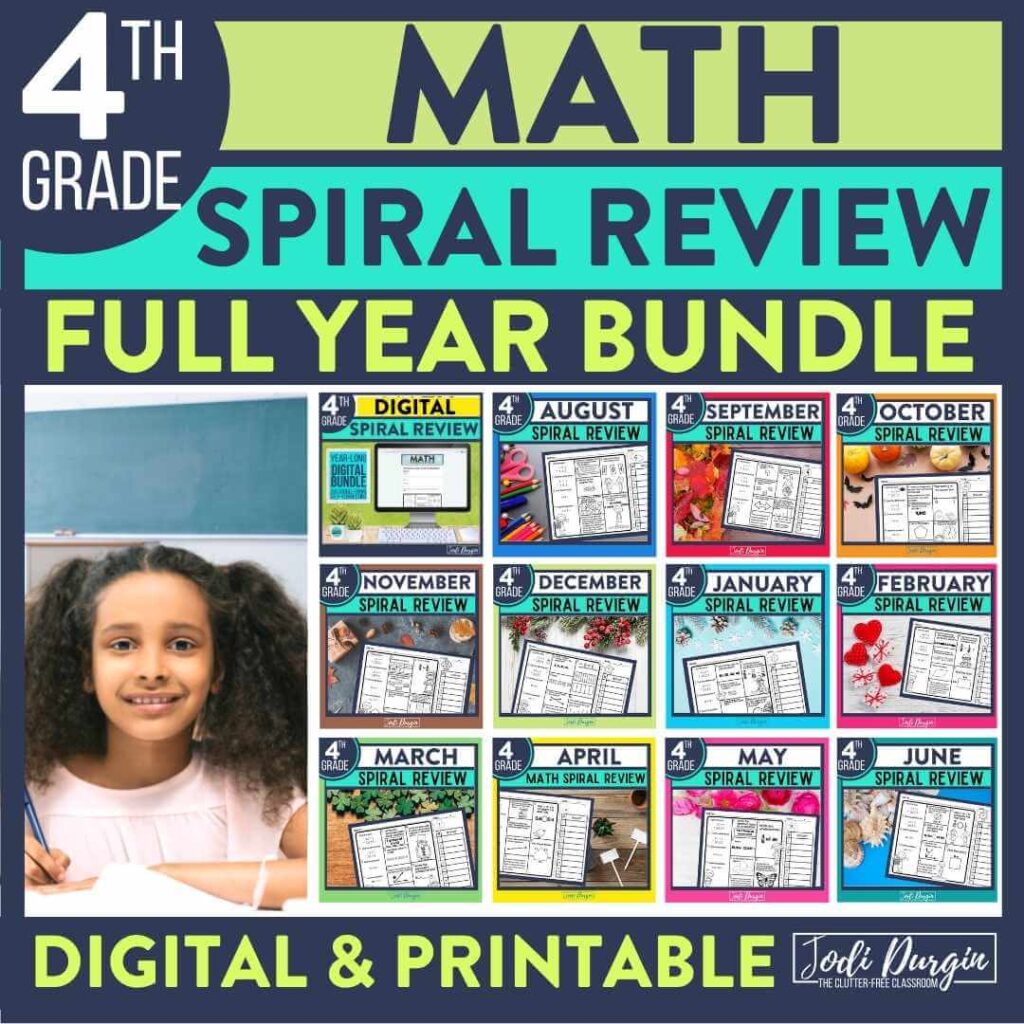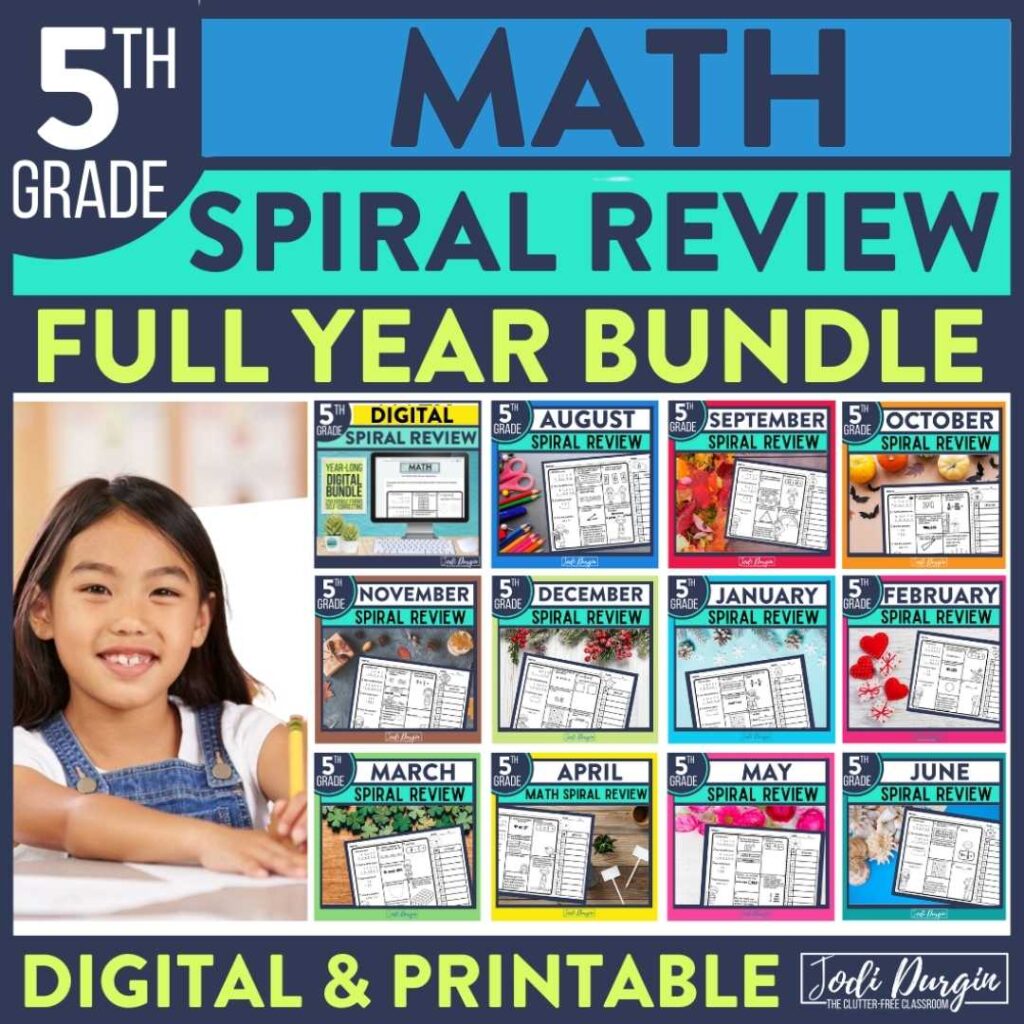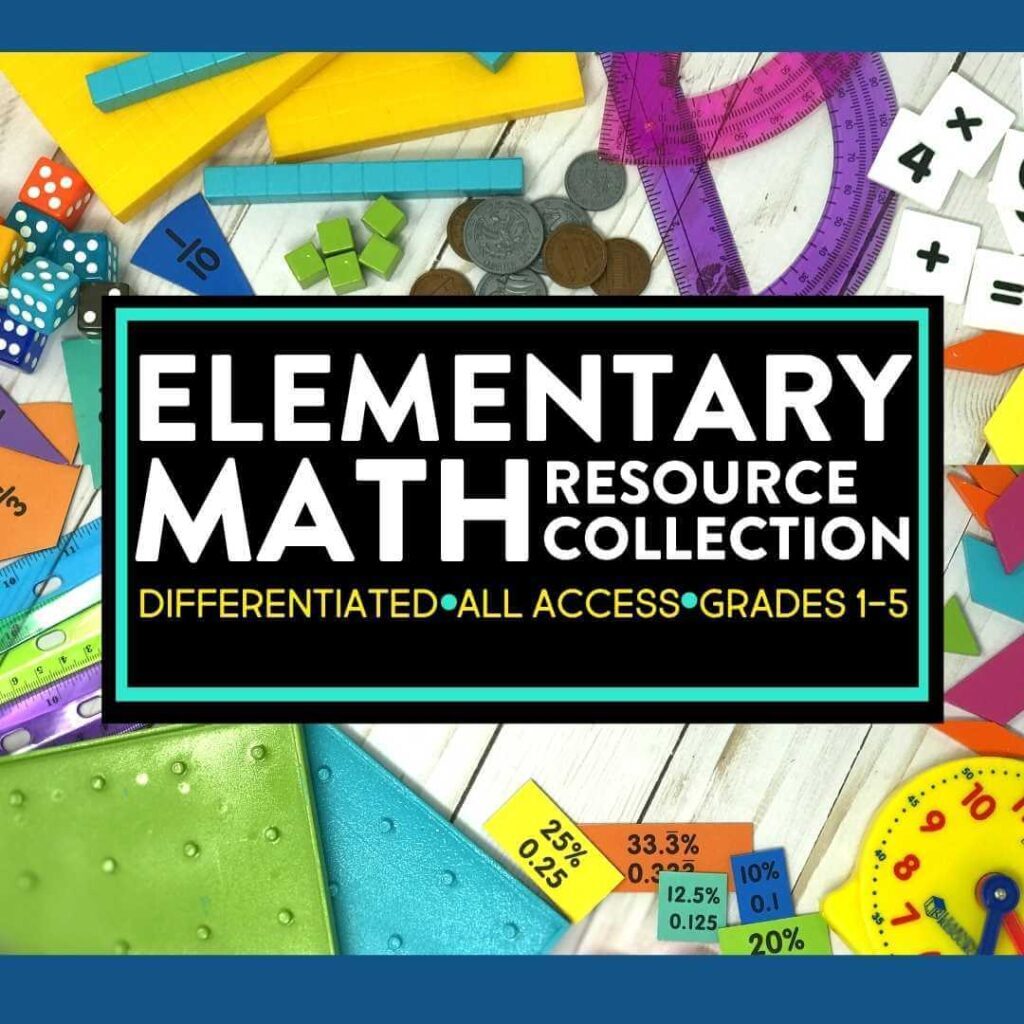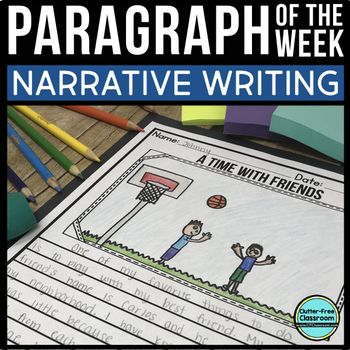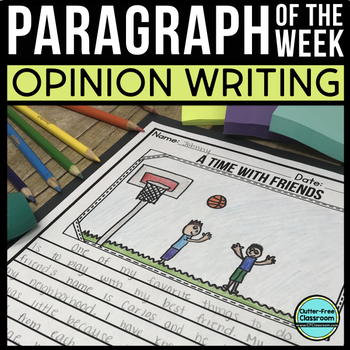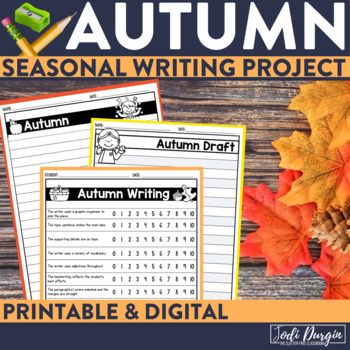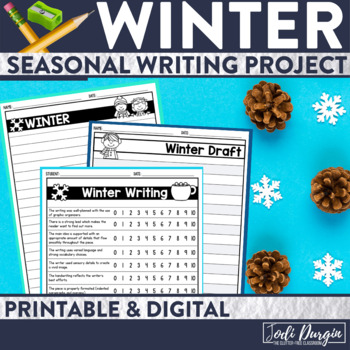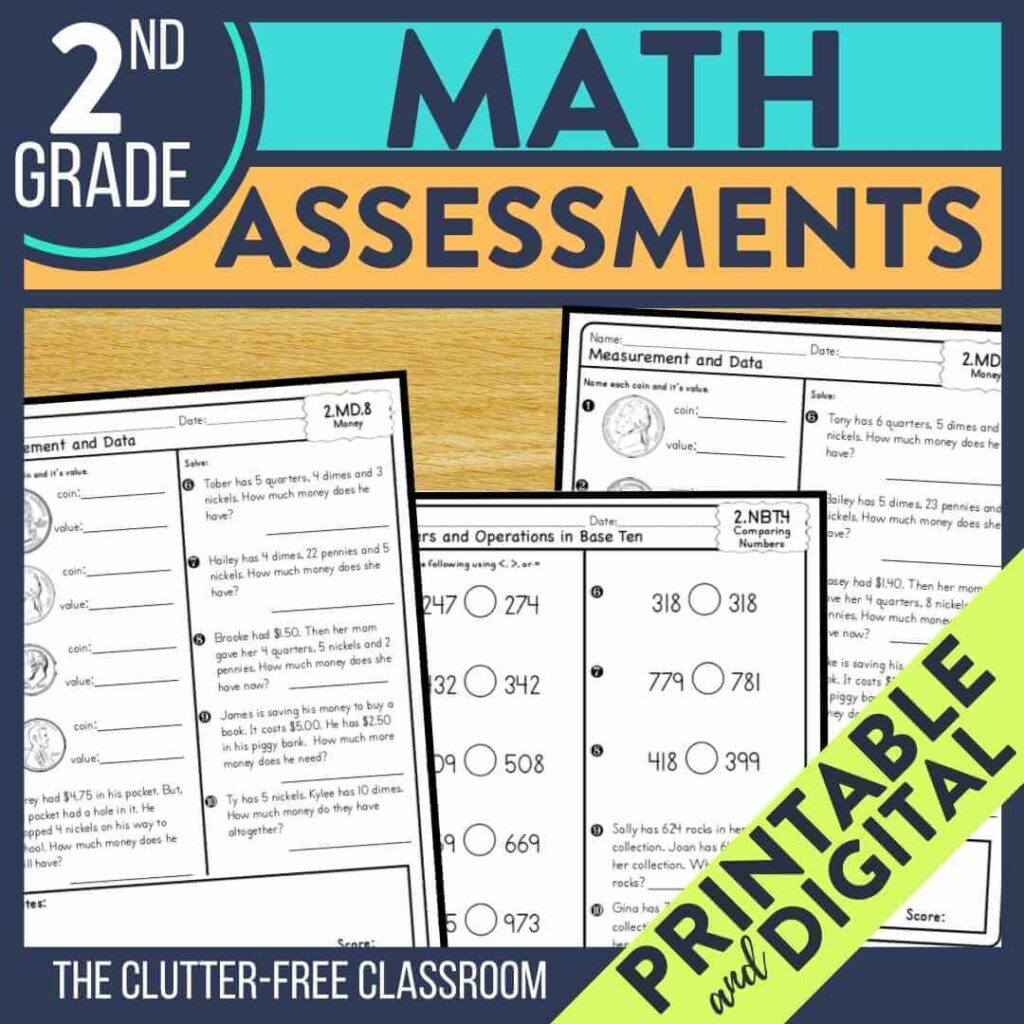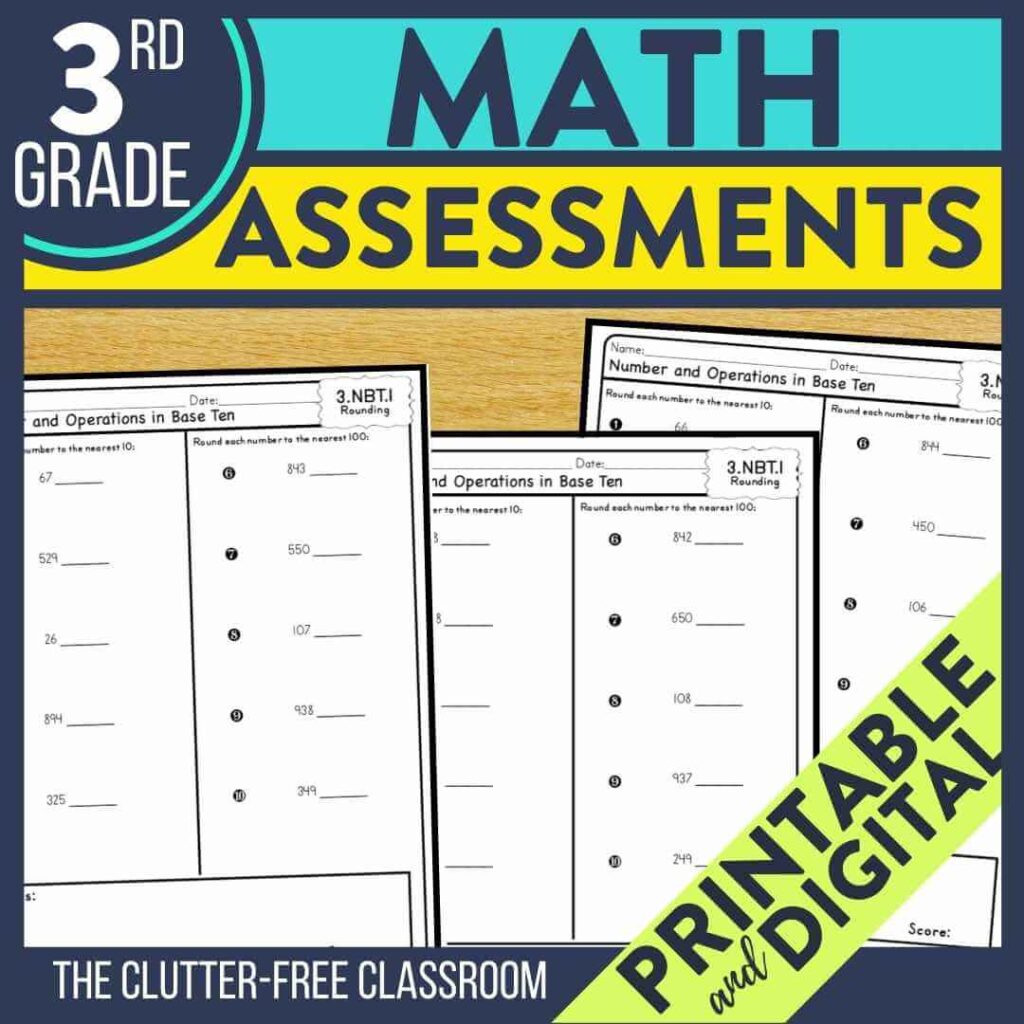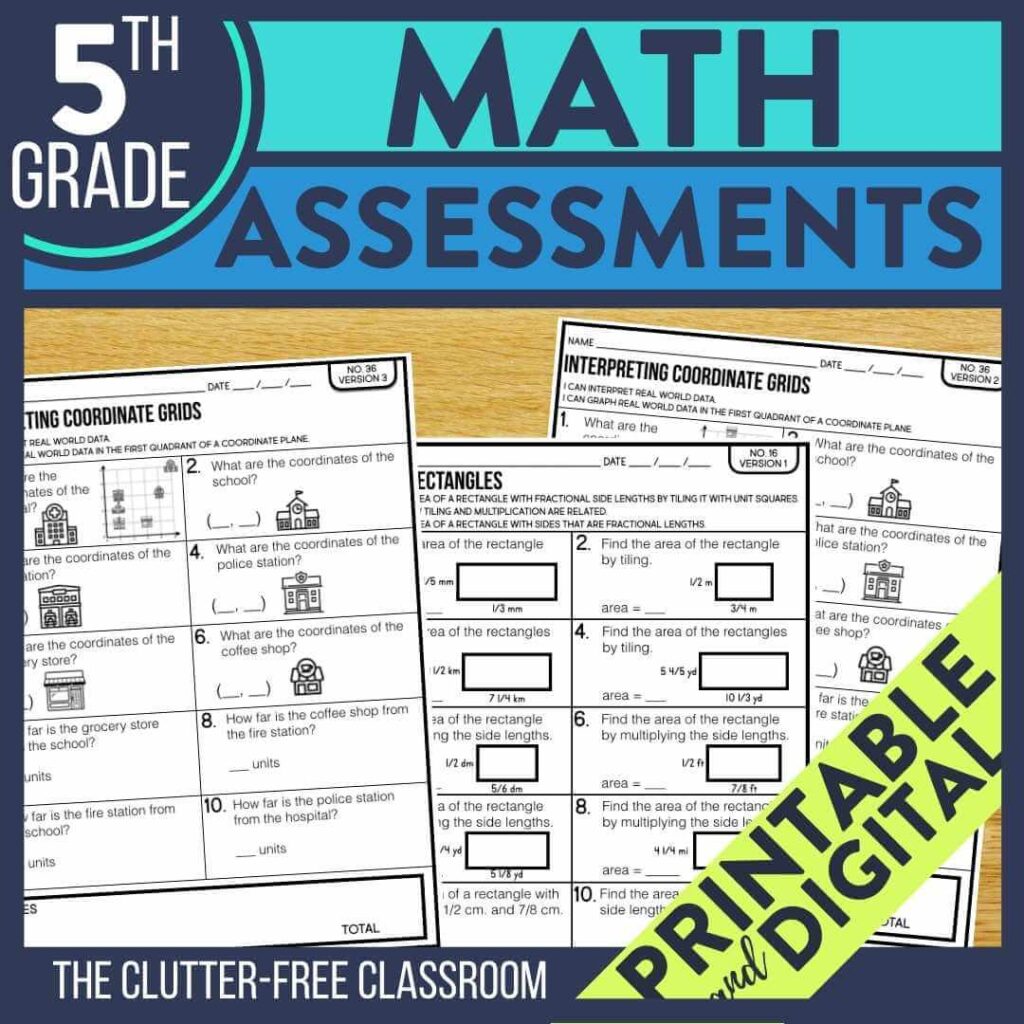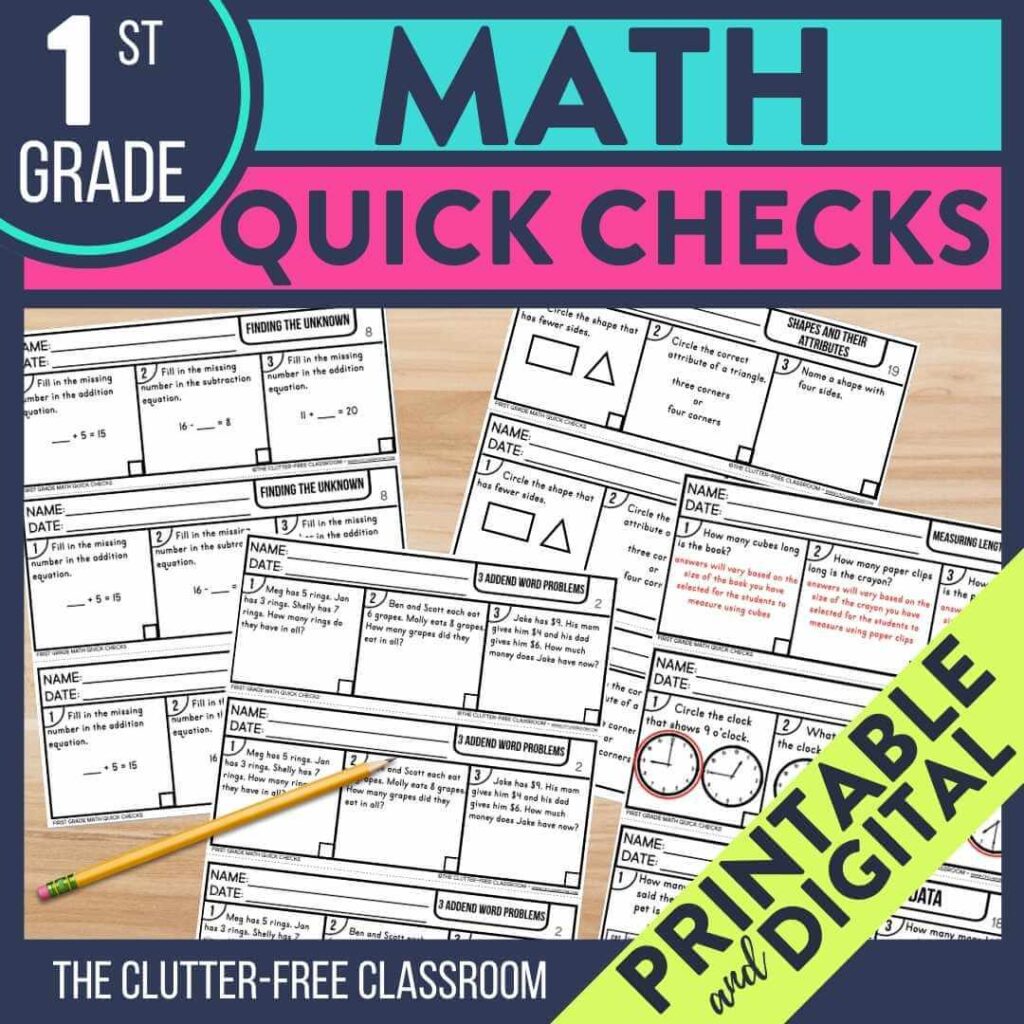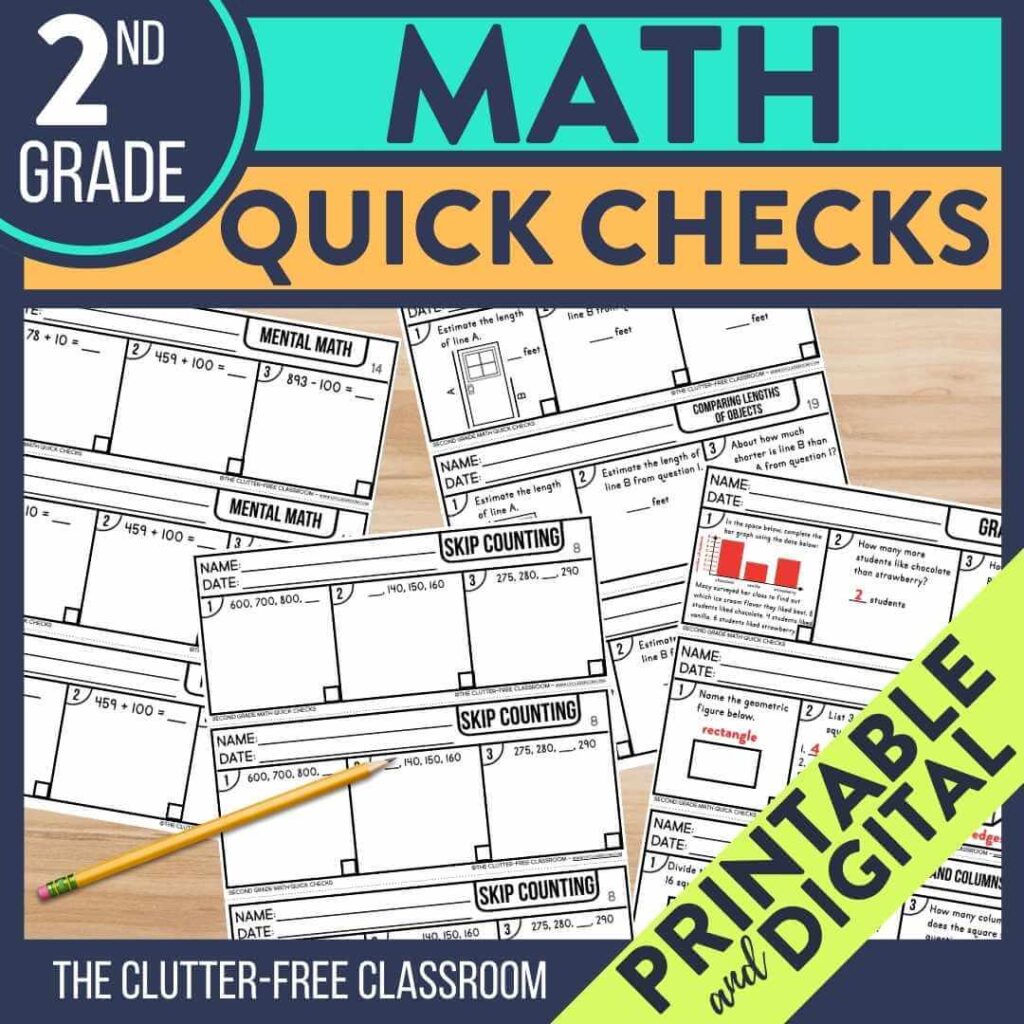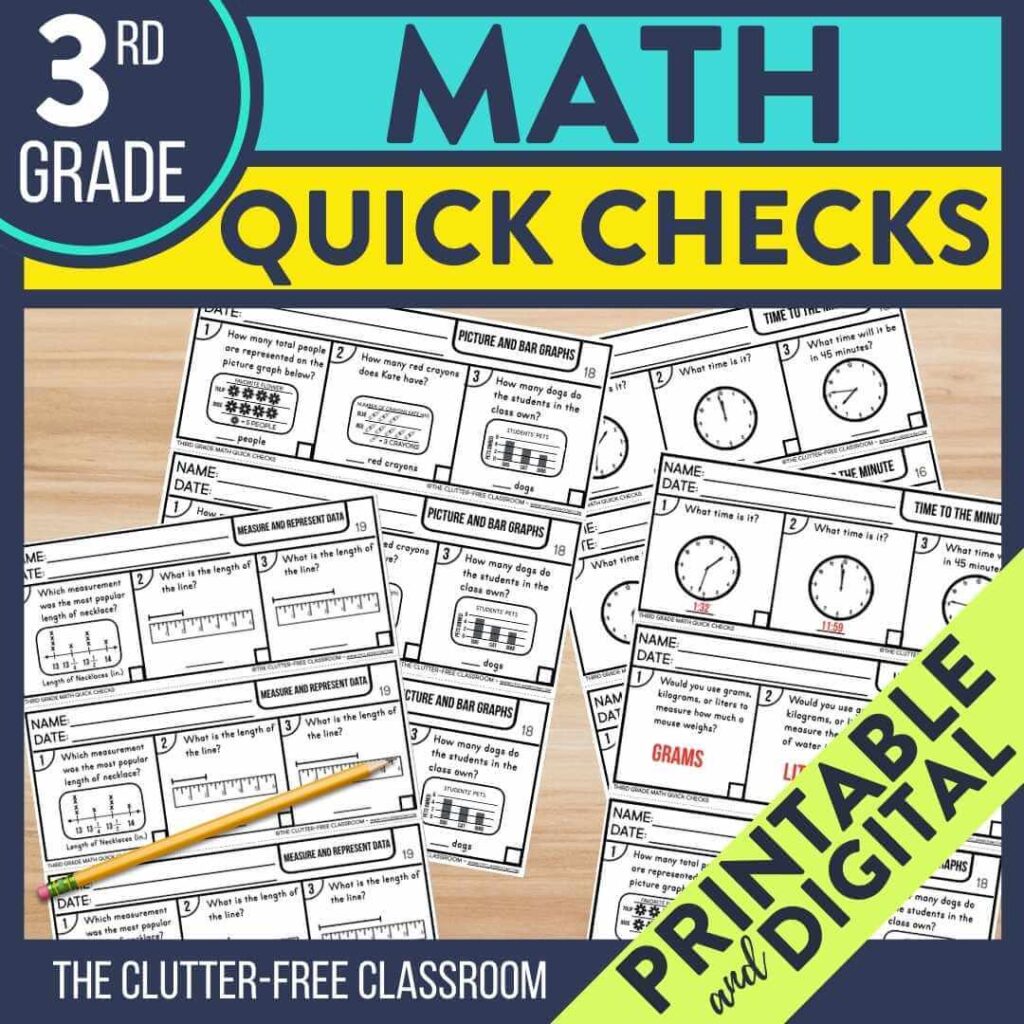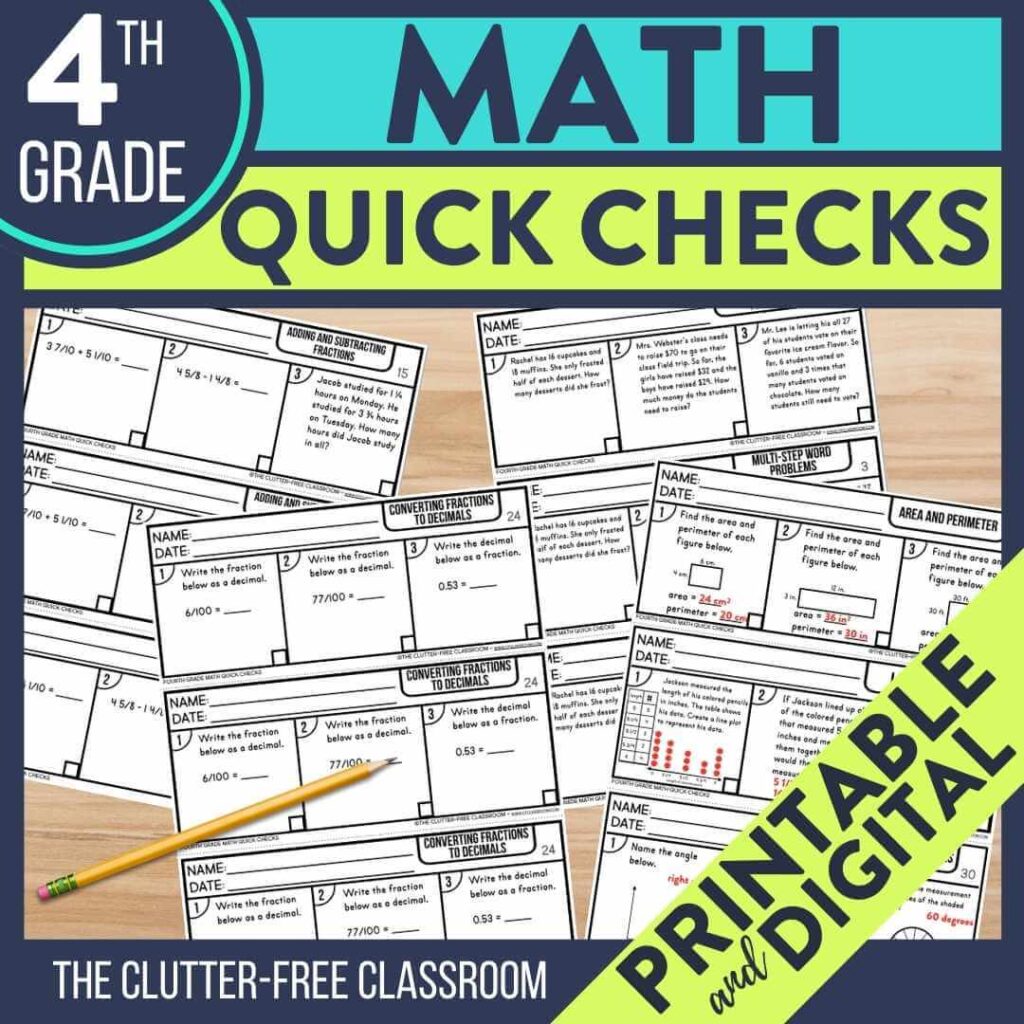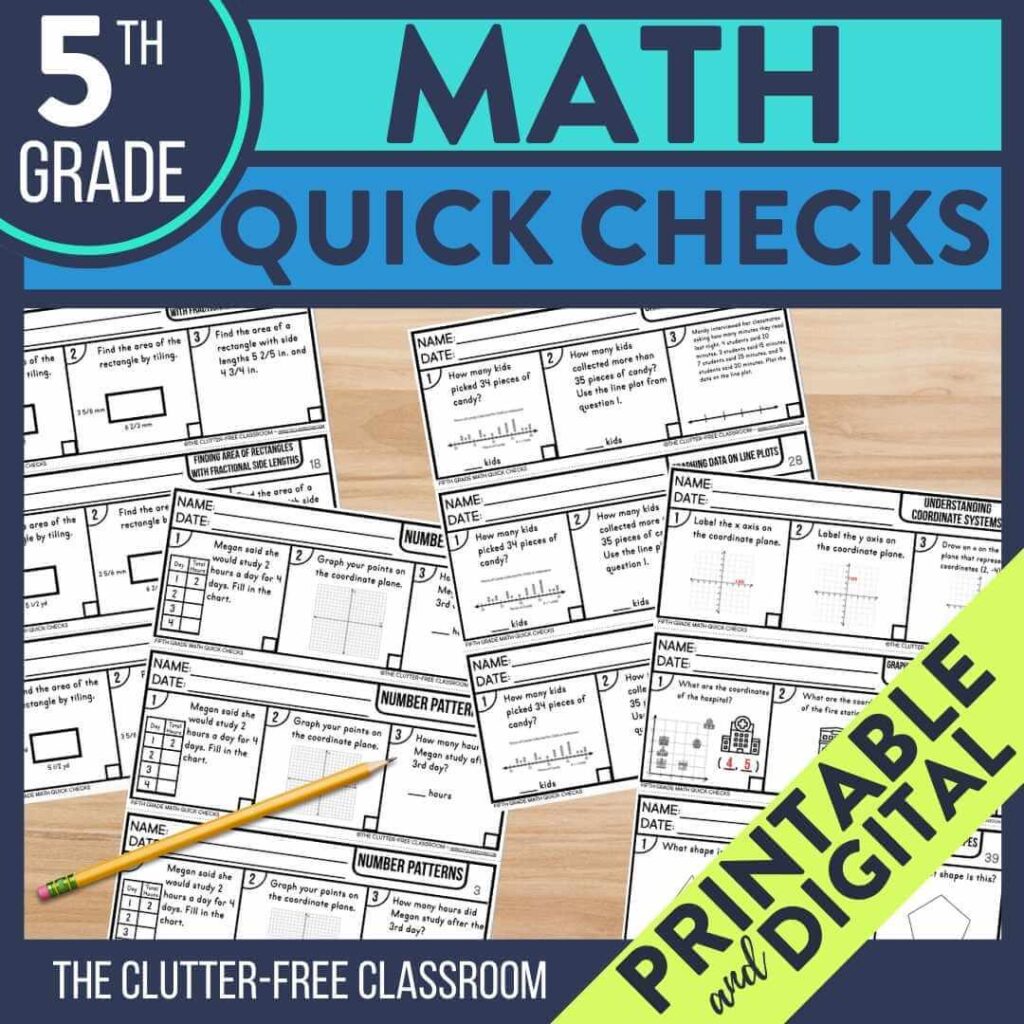Testing has very much become a part of school culture. Some assessments are teacher-initiated and quite meaningful for planning purposeful, data-driven instruction and assess exactly what you have been teaching in class. Other tests are standardized, mandated, developmentally inappropriate and you must give them to your students even though you really don’t want to. This blog post will provide 10 testing tips for teachers to help you in both of those scenarios.
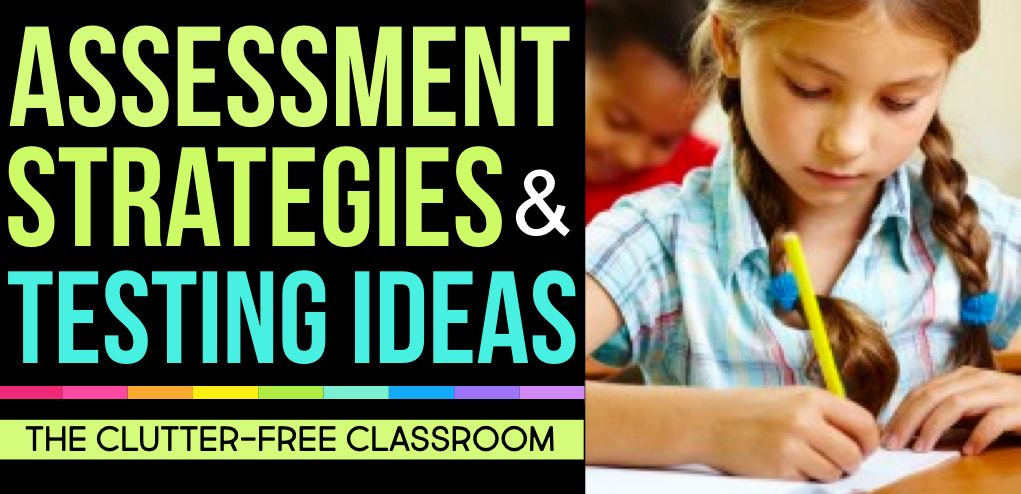
10 Testing Tips for Teachers
As a kid, I remember tests were a big deal in school. Sure, we had the weekly spelling tests which were not worth breaking a sweat over and tests were otherwise few and far between. Today our little friends are tested all. the. time. There is the test. There’s the practice test. There is the test to practice for the practice test. You get the idea!
But, while testing and test prep can be taken to the extreme, there is also a positive side to assessing what kids know which is true data-driven instruction.
When we use the information gathered through both formal and informal assessments to form small groups for focus lessons and differentiate our instruction to address specific student need, the testing becomes purposeful and worth the time investment.
Here are a few testing tips for teachers to make that happen as well as some ways to ease the pain of those annual tests you may feel are developmentally inappropriate, unfair, a waste of time, etc but are required by the state and therefore you have to give them anyway.
1. Explain the Purpose of the Assessment
Always explain the purpose for the assessment. Are you giving them an assessment so that you can plan small group instruction? Are they bubbling in circles because the state mandates they do? No matter the reason for the test, be sure to share the purpose for their work with them.
When giving any kind of assessment I always also preface it by saying, “This is a chance to show what you know”. I explain that they need to show me exactly what they understand and can do so that I can evaluate how well I have taught them. I’ll use this information to determine what to teach them next. I say, in all honesty, that I need to make sure they fully understand concepts. The activity will let me see if I need to teach the information in a new way. Also, I point out that I never want to waste their time in class doing things they already know how to do and this will help me see that they are proficient and ready to move on to the next thing.
I try to make those bigger (state/district mandated) assessments seem more like a celebration than a chore. Before administering the assessment, I explain that we have been working very hard to learn new skills and it is finally our chance to “Show What We Know!” This helps them to view it as an opportunity vs a stressful chore.
2. Assign Quiet Working Stations
The second on the list of testing tips for teachers is to assign “quiet working stations” and use them for assessments. I have tables in my classroom to promote cooperative learning, but there are times when the students need to work on quiet, independent tasks. Each student has a “quiet work spot” that they go to for these tasks. This involves them being spread out around the room a bit. Some sit at tables normally reserved for small group lessons. I also have folders that we use to create a “mini-office” when they are working in these spots. This set up is ideal for testing, but because we also use it for other activities during a typical week, it provides a feeling of normalcy during a test which leads to a relaxed atmosphere.
3. Administer Assessments in Small Groups (When Allowed)
Whenever possible, give the assessments in small groups. I use my grade level math assessments as an activity at the teacher station during the math workshop rotations because I find it helpful to watch them working. It gives me the opportunity to ask questions and make observations to better understand their thinking. I typically take notes or even engage in conversation at appropriate times to identify misconceptions. This is so helpful in planning future instruction!
4. Establish Norms for Testing Situations
Standardized tests come with very strict rules about assisting kids in any way. This poses a challenge because we spend all year guiding our students and helping them work through activities.
If a stressed child tries to get your help on a problem on test day, and you have to tell them you can’t help for the first time, it is going to increase their stress level which can then negatively impact their test results.
I recommend you establish norms for testing situations in advance. Implement them early in the year any time a quiz or test is taking place and be consistent in how you respond to requests for help.
5. Celebrate Grit and Perseverance
The fifth on the list of testing tips for teachers is to praise children who demonstrate grit and perseverance in trying to solve difficult problems regularly.
6. Coach Students to Apply Problem Solving Strategies
Explain that if they do not know how to do something they should try to use strategies to find the answer, but if it ends up being wrong it simply means you will need to teach them some more about the concept. Throughout the school year, get in the habit of coaching students to help themselves when they ask for help instead of directing them.
7. Integrate Daily Spiral Review
During the first few years I taught third grade, I felt the need to set aside several weeks each spring for “test prep.” Basically this meant that we stopped our normal pacing, lessons, and learning and spent WAY TOO MUCH valuable time working through released tests from previous years from the state and test prep booklets purchased by the school. It was sad, mind-numbing, and totally worthless.
We also found ourselves cramming in a highlight reel of all the skills that were scheduled to be taught after the test… because even though 3rd grade didn’t end until three months after the state test, the state felt the need to test them on the entire year’s worth of standards. Seriously?!? I digress. I knew it needed to stop and that there had to be a better way. When I couldn’t find a solution, I came up with my own.
Following the district-issued curriculum typically meant skills were introduced, taught, tested… and forgotten. Every March I found myself frustrated because my bright, intelligent students did not remember how to round numbers or write numbers in expanded form or any of those other skills they appeared to be proficient in back in the first months of school when it was taught… and tested… and forgotten. It wasn’t their fault. They simply had not been given a reason to remember it or opportunities to practice the concepts again.
I created the daily spiral review pages to eliminate test prep, make homework meaningful, and provide students who had not demonstrated proficiency when a skill was taught the opportunity to work towards mastery throughout the year.
They worked out so well that I not only created them for the entire year for my 3rd graders, but expanded them to include 1st-5th grade too. They are great for homework, morning work, RTI, math stations, assessments and more.
By using these each week, I managed to completely eliminate the need for any formal test prep review in the spring. The best part was that my students scored better than ever before each year after implementing them.
8. Limit Distractions
Place a sign on your door to let parents and staff know there is an assessment taking place. Ask the school secretary not to put calls through or use the intercom at the time of testing. Tell your neighboring classrooms when testing will occur. Unnecessary disruptions can wreak havoc on performance.
9. Explicitly Teach How to Take a Test
Test taking has become a skill all its own. Often a child who is proficient in the skill being assessed scores below ability because of not understanding the question, not fully reading the directions or getting confused by certain words. Responding to an open response prompt and citing evidence from the text needs to be constructed a certain way. Math problems are often multi-step. Instead of giving children the time they need to do their best the testing manual regulates a very specific start and end time. Bubbling in the answer sheet the wrong way could give a false sense of failure.
While I do not advocate for taking too much valuable class time away to practice for taking tests, it will help alleviate anxieties and enable your students to perform better if they are given the tools to succeed. Below are some ideas to consider.
- Make practicing a growth mindset a regular expectation in your classroom.
- Teach children how to identify exactly what a prompt is asking them to do.
- Encourage students to ALWAYS check their work before turning in it. This includes resolving math equations, making sure no questions were skipped, and if necessary verifying that the answer sheet/bubbles align with the test.
- Practice mindfulness, breathing, and other stress-reducing techniques.
- Make a goal of improving pacing and time management for tasks.
- Reflect on assessments when they are complete. Discuss what they found to be confusing or challenging. Share tips for overcoming those obstacles next time.
10. Regularly Monitor Progress
The last on the list of testing tips for teachers is to regularly monitor students’ progress. When designing your own assessments, consider making them the following:
- easy to correct
- simple for the parents to understand
- as short as possible
- focused on the skill (if it is a math test, reading shouldn’t be a barrier)
- designed for “apple to apple” comparisons to show growth (pre, mid, and post)
Writing Assessments for Progress Monitoring
Below are writing assessments that are great for monitoring students’ progress towards proficiency with grade level standards.
Paragraph of the Week
Paragraph of the Week is a systematic, scaffolded approach to teaching paragraph writing. By breaking down the writing process into sequential, easy to follow steps, and following a consistent weekly routine, writing becomes a non-threatening task. This spiral review method of routinely brainstorming, planning, organizing, drafting, revising, editing, and finalizing writing has proven to be an EXTREMELY effective way to greatly improve student writing. It’s also a great way to monitor students’ progress towards grade level standards!
Seasonal Writing
These seasonal writing assessments are an assessment tool that teachers administer at pre-determined points throughout the school year. They provide a snapshot of students’ current writing abilities, so teachers can accurately communicate students’ progress towards grade level standards and use the information to design data-driven instruction. Learn all about these benchmark writing assessments!
Math Assessments for Progress Monitoring
Below are math assessments that are great for monitoring students’ progress towards proficiency with grade level standards.
Math Assessments
I designed an assessment packet to use with my 3rd graders. It includes three different assessments for each of the math concepts covered in third grade. This allowed me to use one to identify their current understanding after introducing and practicing a new concept and another to use as an assessment after formal instruction. I reserved the third one as a review to ensure they retained the skill down the road.
The packet also includes a data notebook for the students to track their progress which has been great for communicating progress during Parent/Teacher Conferences. The other two components are a grade book that I keep specifically for the grade level math standards along with lesson planning sheets I use for designing differentiated lessons for guided math instruction.
Upon popular request, I made them for the other grade levels as well! Some of the reasons why they are great are listed below!
- Each has only ten questions so they are quick and easy to correct. Only 5 for 1st grade!
- They allow me to analyze which students need to work on a specific skill further.
- They drive my instruction.
- It’s easy to compare and document student progress because of the three-test format.
- They make it easy for parents to see how well a child understands the skill.
Math Quick Checks
These math quick checks are great exit tickets, which is a type of assessment that is given at the end of a lesson. Teachers use them to quickly assess students’ understanding so that they can use the information to inform their instruction.
In closing, we hope you found these testing tips for teachers at the elementary level helpful! If you did, then you may also be interested in the following:

